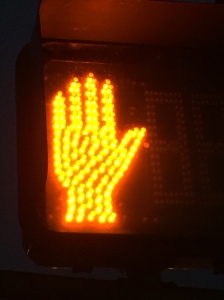
A baffling aspect of our ever-changing transportation system is the limited amount of formal education its users receive. Once someone gets their driver’s license there is no mandatory on-going education requirement for the majority of drivers who use our roads, yet we routinely encounter new users and have to quickly interpret new paint patterns and signs while driving.
I’m surprised law enforcement hasn’t picked up on this. Education is the soft side of enforcement and their participation in on-going educational classes would give them another community touch point with people of every age, color and nationality across the country.
Keeping up on rights and responsibilities, whether you are a motorized or non-motorized driver, that is, whether you drive a car or drive a bicycle or even a horse-drawn cart on Minnesota roads, is key to ensure we know how to interact with each other in those situations where we might rely on what we think is the law.
Below are two local examples where rights and responsibilities were assumed. One involves a guy in a truck and the other a police officer. Both involve Sunday mornings and a certified bicycle safety instructor, me.
Clear sunny Sunday in late September. I am riding my bicycle south on U.S. Highway 61 in the right lane. My lights are on and I am wearing bright clothing. At Shady Lane a person driving a pick-up truck rushes up behind me. He gets within a foot or two of my back wheel and then quickly passes (buzzes) me on the left. Neither of these two behaviors is news to anyone who rides a bike on our area roads. What does stand out is how close he passes me. If I had extended my left arm when he was next to me, half of it would have been inside his car. How he did not knock my mirror off I still don’t know. He yells something out his passenger window, cuts in front of me and speeds down the road. Message sent. Get outta that seat Rosa Parks. Bikes do not belong on Minnesota roads.
On the very next Sunday, at virtually the same place and time, a local police car rushes up on my left, though at a much safer distance. Passenger window down, the officer calmly tells me I cannot ride my bicycle on the highway because it is not legal. We pull over and talk. We exchange information. The officer believes there’s a statute that clearly says bicycles are not allowed on State Highways like U.S. Highway 61. We connect later and he corrects himself. I asked him if he could remember where he learned or read that bicycles could not be ridden on State Highways like U.S. Highway 61, but he could not pinpoint where, or why he thought that was the law.
Each situation involves two different people using the same road. One is trained to enforce traffic laws. The other created his own law while disregarding another driver’s safety. Giving you the license plate number of his truck or the officer’s name will not change how each reacted to my bicycle’s presence on U.S. Highway 61. They were both misinformed.
The U.S. Highway 61 corridor through town was designed by engineers for cars to travel quickly and safely through White Bear Lake. But, believe it or not, U.S. Highway 61 is on all of MnDOT’s state and regional maps as a designated bicycle route and has been for decades.
While we work to fit two quarts into our one-quart transportation infrastructure, let’s invest and make sure everyone understand how to use the transportation system we have. Broadening the minds of all users gets us a better ROI on our transportation dollar because we plant the seeds of tolerance that welcomes all levels of ability, age and speed to use Minnesota roads.
LCI # 5361

I commend you for testing the limits of safety on Hwy 61 – our designated bike route through town. The variety of vehicles we are expected to share the road with is sometimes startling to me. The “education” drivers possess seems to be on a broad spectrum too. Please be safe.
LikeLike
Hi April. As you know, advocates were not including in the decision making for the U.S. Highway 61 corridor. Not designing for everyone has suggested to drivers that they are it, the only show in town. When another driver comes onto their stage is can be upsetting.
LikeLike